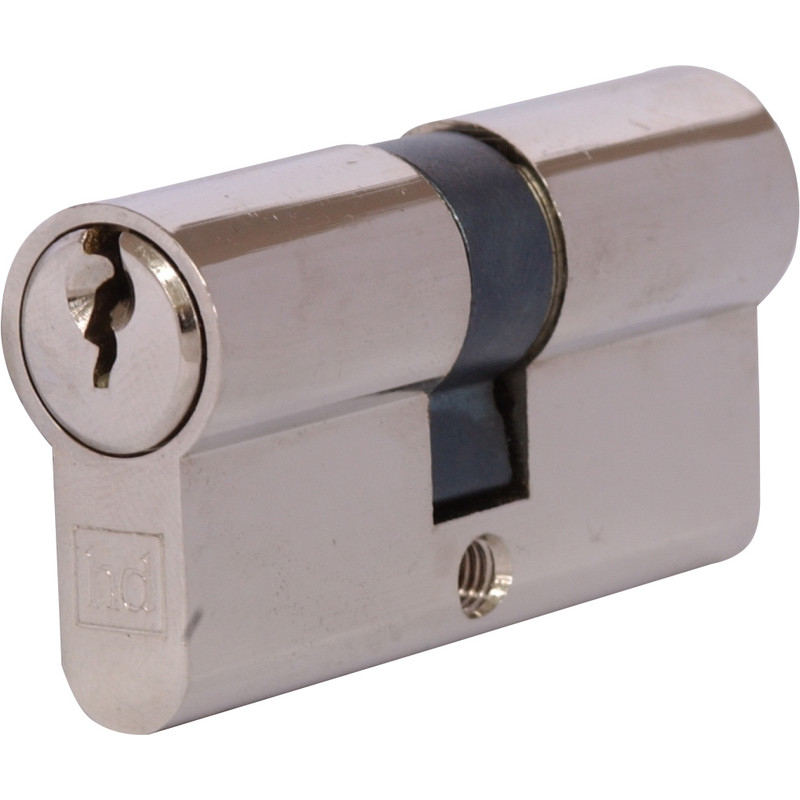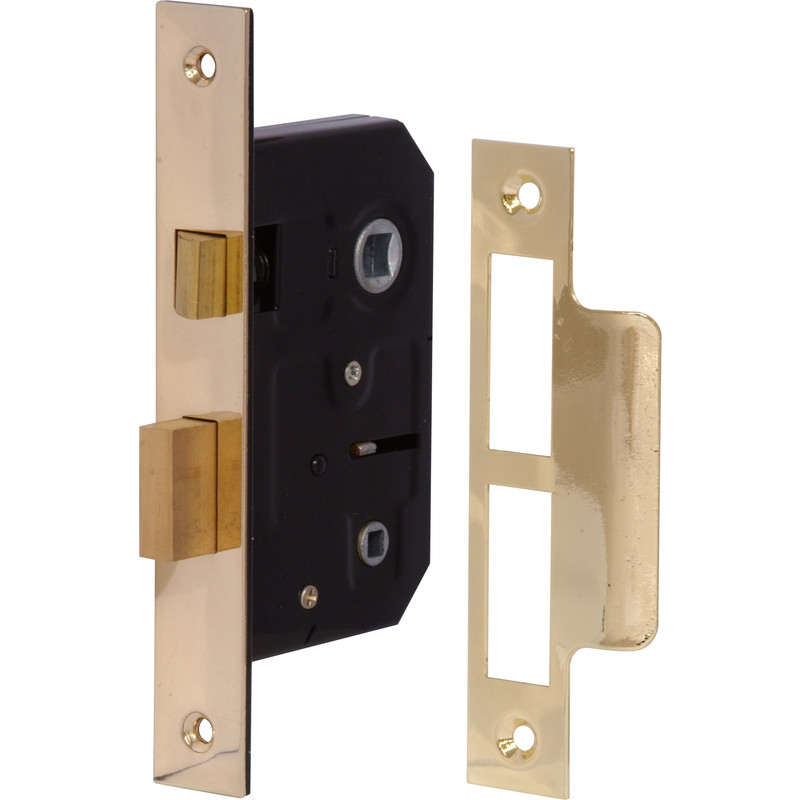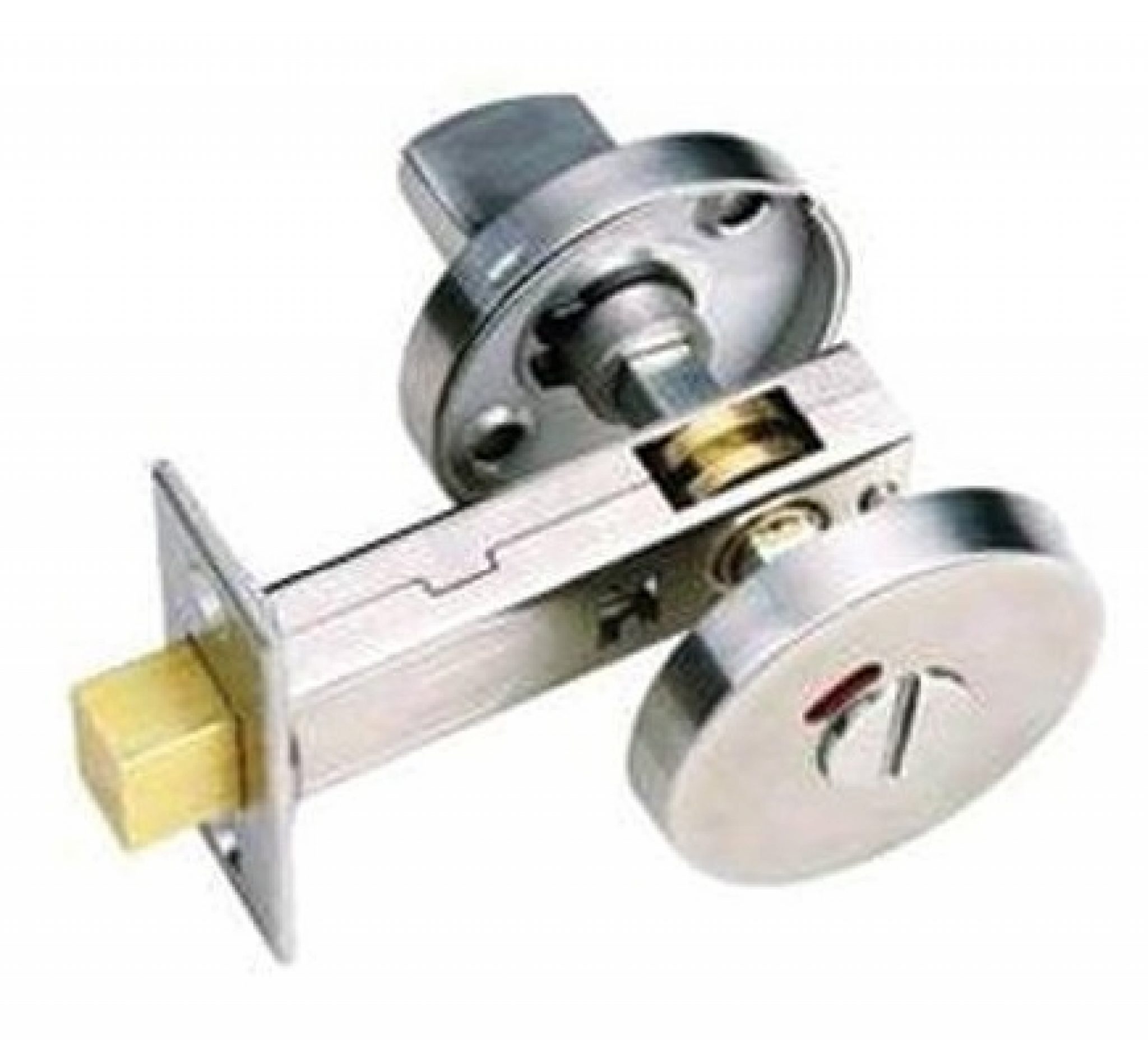Bathroom Door Lock Types and Features

Choosing the right bathroom door lock can be a crucial decision, ensuring both privacy and security in your home. At Toolstation, we offer a wide variety of bathroom door locks to suit different needs and budgets. This guide explores the different types of bathroom door locks available, their key features, and how to choose the best one for your requirements.
Lever Handles
Lever handles are a popular choice for bathroom door locks due to their ease of use and stylish design. They are typically operated by pushing down on the lever, which engages the latch and secures the door. Lever handles are available in various styles, finishes, and materials, offering flexibility in matching your bathroom décor.
Key Features of Lever Handles
- Ease of Use: Lever handles are easy to operate, making them suitable for people with limited mobility or dexterity.
- Variety of Styles: Lever handles come in a wide range of styles, from modern to traditional, allowing you to find the perfect match for your bathroom.
- Durability: Lever handles are typically made from durable materials, such as brass or stainless steel, ensuring long-lasting performance.
- Security Level: Lever handles provide a moderate level of security, suitable for most residential applications.
Knob Locks
Knob locks are another common type of bathroom door lock, featuring a round knob that is turned to engage the latch. They are often found in older homes and are known for their simplicity and affordability. Knob locks are available in various materials and finishes, offering options for different styles and budgets.
Key Features of Knob Locks
- Simplicity: Knob locks are simple to operate, requiring only a twist of the knob to lock or unlock the door.
- Affordability: Knob locks are generally more affordable than lever handles, making them a budget-friendly option.
- Variety of Styles: Knob locks are available in various styles, from traditional to modern, allowing you to find a match for your bathroom decor.
- Security Level: Knob locks provide a moderate level of security, suitable for most residential applications.
Deadbolts
Deadbolts are the most secure type of bathroom door lock, offering a higher level of protection against forced entry. They feature a separate bolt that extends into the doorjamb when locked, providing additional resistance against prying or kicking. Deadbolts are typically used in conjunction with a lever handle or knob lock, offering an extra layer of security.
Key Features of Deadbolts
- Enhanced Security: Deadbolts provide a higher level of security than lever handles or knob locks, making them ideal for areas where security is paramount.
- Durability: Deadbolts are typically made from durable materials, such as brass or stainless steel, ensuring long-lasting performance.
- Variety of Styles: Deadbolts are available in various styles, from traditional to modern, allowing you to find a match for your bathroom decor.
- Keyed Entry: Deadbolts typically require a key to unlock, providing an extra layer of security.
Bathroom Door Lock Features Comparison, Bathroom door lock toolstation
| Type | Security Level | Material | Finish | Price Range |
|---|---|---|---|---|
| Lever Handles | Moderate | Brass, Stainless Steel | Chrome, Nickel, Bronze | £10 – £50 |
| Knob Locks | Moderate | Brass, Stainless Steel | Chrome, Nickel, Bronze | £5 – £30 |
| Deadbolts | High | Brass, Stainless Steel | Chrome, Nickel, Bronze | £15 – £80 |
Choosing the Right Bathroom Door Lock

Choosing the right bathroom door lock is crucial for ensuring privacy and security. It’s not just about finding a lock that looks good; it’s about finding one that meets your specific needs and complements your existing door hardware. There are many factors to consider, including privacy needs, budget, and the type of door you have.
Factors to Consider
Before diving into the decision tree, let’s discuss some key factors that will influence your choice.
- Privacy Needs: Do you need a lock that provides a high level of security, or is a simple privacy lock sufficient? For example, if you have young children, you might want a lock that’s difficult for them to open. If you live in a shared apartment or house, a lock that offers more security might be necessary.
- Budget: Bathroom door locks come in a wide range of prices. It’s important to set a budget before you start shopping so you don’t overspend. Consider factors like the type of lock, the material, and the brand.
- Existing Door Hardware: The existing door hardware on your bathroom door will determine what type of lock you can install. If you have a standard door, you’ll have more options than if you have a door with a unique design or hardware. It’s always a good idea to measure your existing door hardware to ensure compatibility.
Decision Tree for Choosing a Bathroom Door Lock
To help you navigate the process of choosing the right lock, here’s a simple decision tree:
- What is your primary concern?
- Privacy: Proceed to step 2.
- Security: Proceed to step 3.
- Budget: Proceed to step 4.
- How much privacy do you need?
- Basic privacy: Consider a simple privacy lock.
- High privacy: Consider a deadbolt lock or a lock with a keyed cylinder.
- What level of security do you need?
- Basic security: Consider a lock with a strong deadbolt and a reinforced strike plate.
- High security: Consider a lock with a keyed cylinder and a security rating.
- What is your budget?
- Low budget: Consider a basic privacy lock or a simple deadbolt lock.
- Medium budget: Consider a lock with more features, such as a keyed cylinder or a security rating.
- High budget: Consider a high-end lock with advanced features, such as a smart lock or a lock with a fingerprint reader.
Compatibility with Existing Door and Door Frame
Compatibility is crucial! Before you buy a lock, ensure it’s compatible with your existing door and door frame. Here are some key points to consider:
- Door Thickness: The lock must be compatible with the thickness of your door. If your door is thicker or thinner than standard, you’ll need a lock designed for that thickness.
- Door Hardware: The lock should be compatible with the existing door hardware, such as the strike plate and the latch. If you’re replacing an existing lock, it’s best to stick with the same type of lock to ensure compatibility.
- Door Frame: The lock must be compatible with the door frame. If you have a unique door frame, you might need a custom lock or a lock that can be adapted to your door frame.
Installing a Bathroom Door Lock: Bathroom Door Lock Toolstation

Installing a bathroom door lock can seem daunting, but it’s a task that most DIY enthusiasts can handle with the right tools and a little patience. This guide will walk you through the process step-by-step, helping you turn your bathroom door into a sanctuary of privacy.
Tools and Materials
You’ll need a few basic tools to install your bathroom door lock:
- Screwdriver: A Phillips head screwdriver is essential for removing and installing screws.
- Drill: You’ll need a drill with a bit that matches the size of the screws you’ll be using. If you’re drilling new holes, make sure you have a drill bit that’s slightly smaller than the screw diameter.
- Pencil: A pencil is handy for marking the location of the new lock and drilling holes.
- Measuring tape: Use a measuring tape to determine the correct placement of the new lock on the door.
- Level: A level will ensure the new lock is installed straight and even.
- Safety Glasses: Protect your eyes from flying debris when drilling or using tools.
Safety Precautions
- Wear Safety Glasses: Always wear safety glasses when drilling or using tools to protect your eyes from flying debris.
- Use a Workbench or Stable Surface: Ensure you have a stable surface to work on, whether it’s a workbench or a sturdy table.
- Secure the Door: Make sure the door is securely closed and braced so it doesn’t move while you’re working.
- Handle Tools with Care: Always handle tools with care and ensure they’re in good working order before using them.
Installing the Bathroom Door Lock
- Remove the Existing Lock: If you’re replacing an old lock, start by removing it. Use a screwdriver to remove the screws holding the lock in place. Once the screws are removed, the lock should come off easily.
- Prepare the Door: If you’re installing a new lock, you’ll need to prepare the door. This may involve drilling new holes for the screws or making adjustments to the existing holes. If you’re drilling new holes, make sure to use a drill bit that’s slightly smaller than the screw diameter. This will prevent the screw from splitting the wood.
- Install the Strike Plate: The strike plate is the part of the lock that goes on the door frame. Use a level to ensure the strike plate is installed straight and even. Once you’re satisfied with the placement, use a screwdriver to secure the strike plate to the door frame.
- Install the Lock: Place the lock on the door and align it with the strike plate. Use a screwdriver to secure the lock to the door. Make sure the screws are tight, but don’t overtighten them, as this could damage the door.
- Test the Lock: Once the lock is installed, test it to make sure it works properly. Open and close the door several times, and try locking and unlocking the door. If the lock doesn’t work properly, you may need to adjust the strike plate or the lock itself.
Troubleshooting Common Installation Problems
- Misaligned Holes: If the holes for the lock don’t line up properly, you can use a drill to enlarge the holes or use a chisel to create a new hole.
- Difficulty with the Latch: If the latch doesn’t engage properly, you may need to adjust the strike plate. You can use a screwdriver to loosen the screws on the strike plate and adjust its position.
- Loose Screws: If the screws are loose, you can tighten them with a screwdriver. If the screws are stripped, you may need to replace them.
Bathroom door lock toolstation – While Toolstation offers a variety of bathroom door locks, perhaps you’re looking to enhance the overall aesthetic of your bathroom. If so, consider investing in bathroom cupboard doors made to measure , which can elevate the look of your space.
These custom doors, paired with a secure lock from Toolstation, can create a functional and visually stunning bathroom sanctuary.
A sturdy bathroom door lock from Toolstation can keep your privacy secure, but for a touch of Halloween fun, consider adding a halloween bathroom door cover. These decorative covers can transform your bathroom door into a spooky spectacle, while still allowing for the peace of mind that a reliable lock provides.